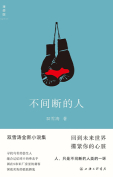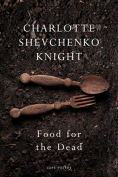Village Weavers by Myriam J. A. Chancy
 Portland. Tin House. 2024. 336 pages.
Portland. Tin House. 2024. 336 pages.
The stories we hear as children can remain with us for our entire lives. They can be memories passed down from one generation to the next, fables that enchant us and shape the contours of our dreams, or things that we have overheard from others, transforming hurt into resentment, right before our eyes. These are but a handful of ways that stories operate in Myriam J. A. Chancy’s latest novel, Village Weavers, which traces the lives of two Haitian girls, Sisi (Simone) and Gertie (Gertrude), as they come of age and eventually grow old. Whether the tales of the simbi (the water spirits) told to Sisi as a child, the illustrated children’s books Sisi makes as an adult, or the intimate secrets that tie Sisi and Gertie together for life, stories, and the stillness they engender, lie at the heart of Village Weavers.
Village Weavers is Chancy’s much-anticipated follow-up to her celebrated Tin House debut, What Storm, What Thunder (2021), which delved into the disquieting moments surrounding the 2010 earthquake in Haiti. If What Storm, What Thunder is said to be a choral novel, Village Weavers can be considered more of a duet, where Simone and Gertie share the narration in alternating sections as they traverse various times and spaces—Port-au-Prince in the 1940s, Paris in the 1960s, and Cincinnati, Orlando, and Phoenix from the 1980s to the early 2000s. In their travels, Sisi and Gertie encounter intimate silences around class, race, and nationality, which, over time, seed the ground with mistrust and hesitation. The cumulative effect of these overlapping decades and geographies is the material, conceptual, and imaginative notion of diaspora, to echo the scholar Katherine McKittrick, which opens space for new modes of intergenerational storytelling and (af)filiation out of the scattering and displacement of people over time.
The reasons behind Sisi and Gertie’s movements are as varied as the eras the novel depicts, but there remains at the heart of their friendship a foundational secret that quietly unravels over time. Even as the two attempt to reconcile their separation, differences in their lives and their trajectories keep them apart yet simultaneously bound together. As Simone and Gertie advance in age, they fall in and out of touch, as though their migratory paths were at once in and out of sync, like once-resident birds on the move. Perhaps like Haiti’s village weaver birds themselves, Simone and Gertie are forced to build and abandon many nests throughout their lives as they transform their disparate geographies into places that resemble home.
Nathan H. Dize
Washington University in St. Louis































